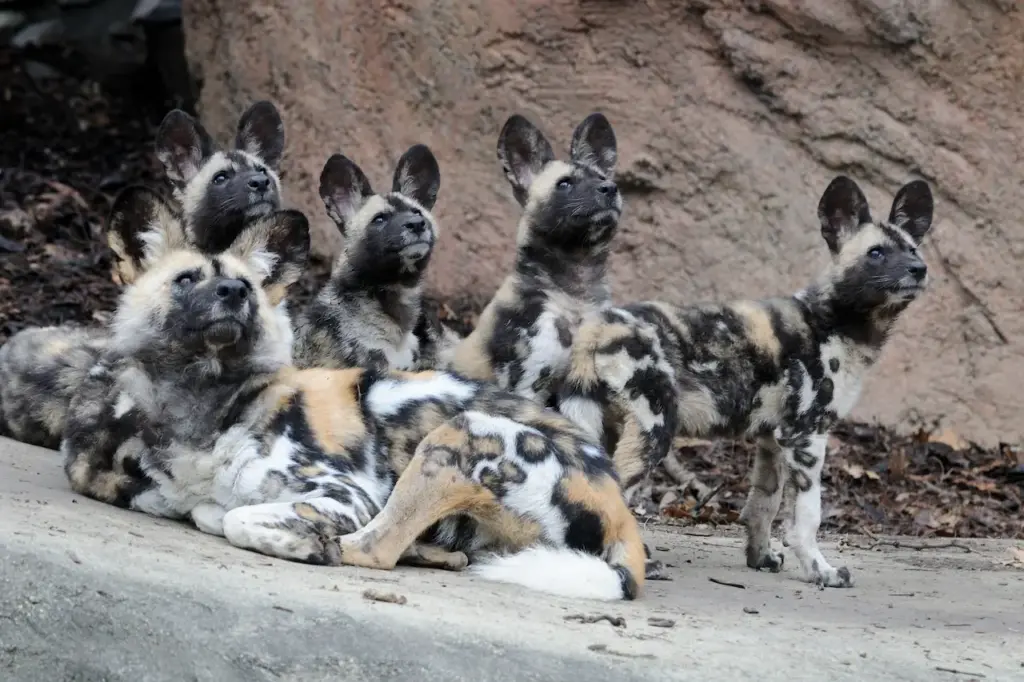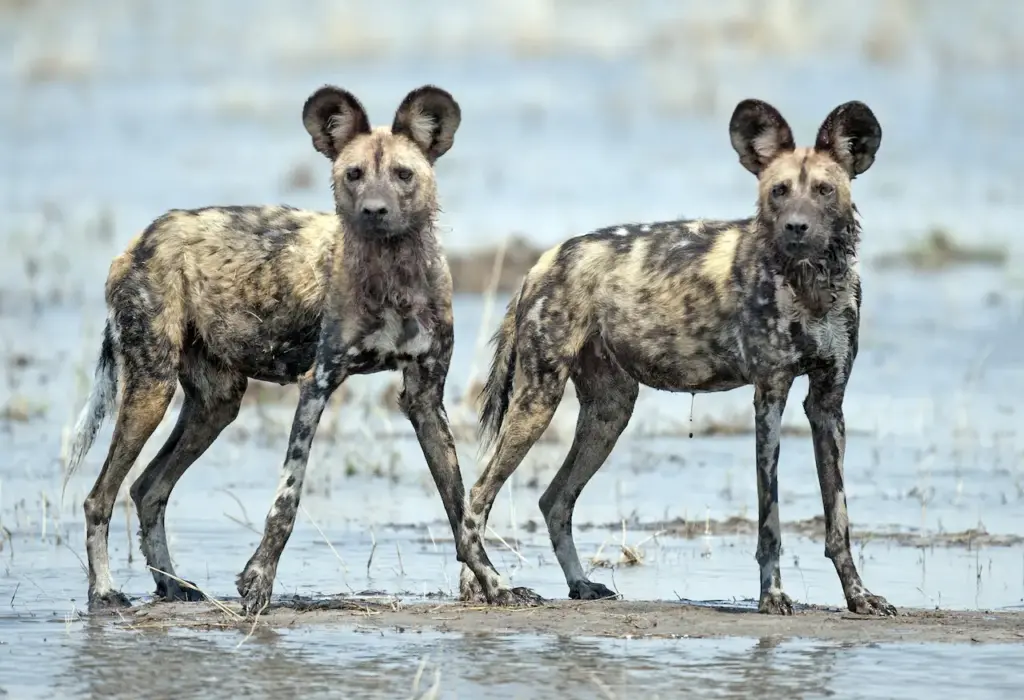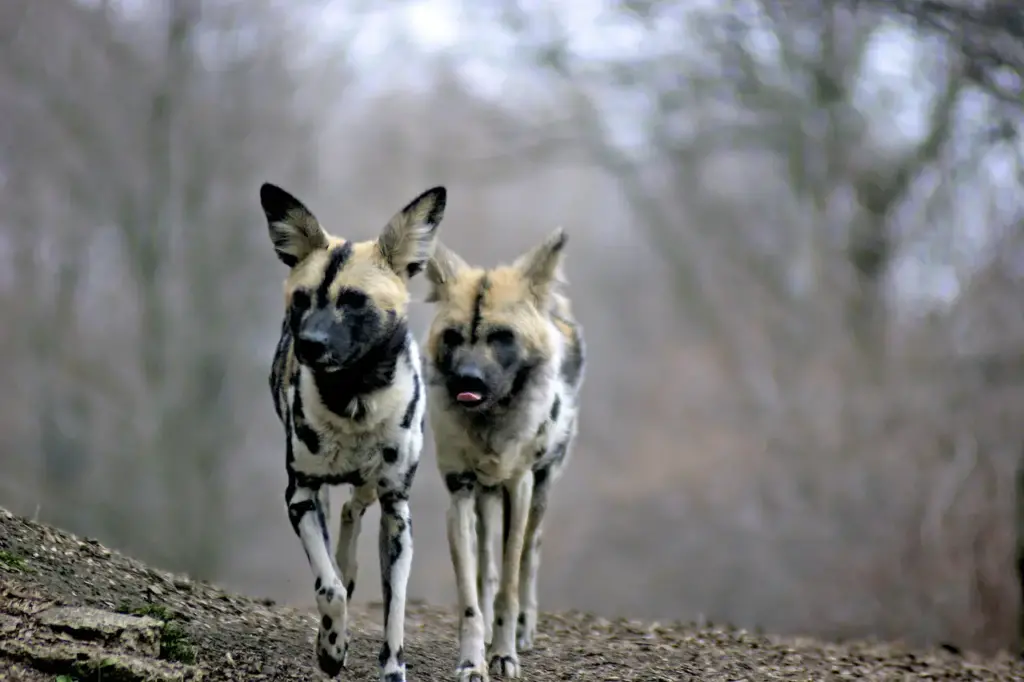What Eats Wild Dogs?
Categories
- Accipitridae (1)
- Acrididae (1)
- Algae (2)
- Alligatoridae (1)
- Amoebidae (1)
- Amphibians (3)
- Anatidae (1)
- Anguillidae (1)
- Arachnids (2)
- Bears (2)
- Big Cats (3)
- Birds (13)
- Bovidae (5)
- Bufonidae (1)
- Camelids (1)
- Cameras (1)
- Canines (13)
- Caridea (1)
- Carnivora (10)
- Castoridae (1)
- Cats (5)
- Cebidae (1)
- Cephalopod (1)
- Cervidae (2)
- Cetacean (1)
- Chondrichthyes (1)
- Crocodilia (2)
- Crustaceans (4)
- Culicidae (1)
- Cyaneidae (1)
- Dasypodidae (1)
- Dasyurids (1)
- Deer (1)
- Delphinidae (1)
- Desktop (1)
- Didelphidae (1)
- Dinosaurs (1)
- Dogs (13)
- Dolphins (2)
- Echinoderms (1)
- Education (10)
- Elephantidae (1)
- Equine (1)
- Erethizontidae (1)
- Erinaceidae (1)
- Farming (1)
- Felidae (5)
- Fish (5)
- Food Chain (31)
- Food Web (2)
- Formicidae (1)
- Frugivore (1)
- Gaming (1)
- Gastropods (1)
- Giraffids (1)
- Great Apes (2)
- Health Conditions (3)
- Herbivore (4)
- Hi-Fi (1)
- Hippopotamidae (1)
- Hominidae (1)
- Insects (10)
- Invertebrates (2)
- Keyboards (1)
- Laptops (1)
- Leporidae (1)
- Mammals (23)
- Marsupials (4)
- Mephitidae (1)
- Microchiroptera (1)
- Mollusks (2)
- Mongoose (1)
- Muridae (1)
- Nocturnal Animals (1)
- Odobenidae (1)
- Omnivore (2)
- Phasianidae (1)
- Phocidae (1)
- Plankton (1)
- Plants (2)
- Primate (1)
- Ranidae (1)
- Reptiles (7)
- Rhinocerotidae (1)
- Rodents (5)
- Salamandridae (1)
- Scarabaeidae (1)
- Sciuridae (2)
- Sharks (1)
- Shellfish (1)
- Sound (1)
- Spheniscidae (1)
- Suidae (1)
- Superfamily Papilionoidea (1)
- Theraphosidae (1)
- What Eats (5)
Wild dogs refer to a range of medium-sized canid species, including African wild dogs, dholes in Asia, and dingoes in Australia. They fill an important ecological niche as predators, helping control populations of herbivores like deer, antelope, and boar.
Wild dogs are incredibly efficient hunters who rely on stamina and teamwork to pursue and exhaust prey. They form complex social packs and exhibit strategic cooperative hunting behaviors.
Wild dogs face threats from various predators and scavengers that eat them for sustenance. As medium-sized canids, wild dogs fall prey to larger carnivores and compete over food sources with many animals.
Their survival depends on avoiding becoming a meal themselves. In this article, we will explore what creatures eat wild dogs and the pressures they face across different habitats.
Table of Contents
ToggleNatural Predators of Wild Dogs
Large Carnivores
The primary predators of wild dogs are larger carnivorous mammals that occur across their habitats. These apex predators will kill and eat wild dogs when the opportunity arises.
Lions
In Africa, lions pose a significant predatory threat to wild dogs. Lions dominate wild dogs and will steal their kills. They will also kill wild dogs, especially pups, and consume them. Wild dogs exhibit fear responses around lion scent and avoid areas frequented by lions.
Leopards
Leopards also kill and eat wild dogs in Africa. Their greater stealth and ability to haul carcasses into trees make leopards difficult opponents for wild dogs to detect and steal from. Leopards pose a particular threat to wild dog pups left at den sites.
Hyenas
Spotted hyenas compete directly with wild dogs for resources in Africa and will kill wild dog pups. However, hyenas are more scavengers than hunters, so conflict arises mainly over contested carcasses that hyenas will steal. Wild dogs avoid hyena dens to reduce encounters.
Tigers
In Asia, tigers are a major predator of wild dogs such as dholes. Tigers will track and kill dholes as competitors, though they scavenge more than actively hunt dholes. Dholes exhibit great fear of tiger scent and avoid areas where tigers are active.
What Eats Wild Dogs & Large Carnivores
In addition to the major apex predators, various other large carnivores may occasionally prey on wild dogs or compete with them.
Species like cheetahs, bears, wolves, and crocodiles can all pose local threats under certain conditions. Pups and smaller wild dog species face higher risks.
Scavengers
Scavenger species will readily eat the remains of wild dogs that have been killed by other predators or died naturally. By disposing of carcasses, scavengers play an important ecological role.
Hyenas
Spotted hyenas are the most frequent scavengers of wild dog kills in Africa. Their strong jaws and ability to digest bone enable them to demolish carcasses rapidly. Hyenas will chase wild dogs from carcasses.
Jackals
Jackals often scavenge off wild dog kills. Though smaller, black-backed jackals and side-striped jackals will harass wild dogs at carcasses and benefit from their superior hunting abilities. Jackals consume scraps scrounged from wild dog kills.
Vultures
Vultures rely on scavenging animal remains for food. Various vulture species will descend on wild dog kills and feed until the carcass is demolished. Their highly corrosive stomach acid allows them to safely ingest rotting meat and bones.
Insects
Carrion-feeding insects like blowflies, burying beetles, and carrion beetles will quickly arrive at wild dog carcasses. Insects and their larvae recycle dog remains back into the ecosystem through decomposition and nutrient cycling.
What Eats Wild Dogs & Other Scavengers
Given the chance, many other opportunistic animals will feed on wild dog kills. Species from hyraxes and rodents to eagles and hawks act as scavengers. Even tortoises have been observed feeding on decomposing wild dog carcasses.
Competitors
Wild dogs also face indirect competition from animals with the same prey resources, limiting food availability. Though not direct predators, these species impact wild dog survival.
Lions
As the top predators in Africa, lions exert enormous pressure through competition. Their greater size and group hunting allow them to dominate prime prey species like antelope. Lions reduce the prey availability for wild dogs.
Leopards
Leopards also compete strongly with wild dogs, targeting the same antelope prey base. Leopards are solitary hunters, so wild dogs can locally outcompete leopards through cooperative hunting in packs. But leopards are very adaptable hunters.
Hyenas
Spotted hyenas have high dietary overlap with wild dogs, targeting similar prey. Hyenas are less efficient cooperative hunters than wild dogs but make up for this through scavenging. Hyenas are a pervasive source of competition for wild dogs.
Dholes
In Asia, the main competitors with dhole wild dogs are tigers through direct killing and leopards due to high prey overlap. Prey scarcity due to habitat loss exacerbates competition, increasing starvation risks for dholes.
Human Impact on Wild Dog Populations
Historical Persecution
Hunting and Trapping
Humans have long persecuted wild dogs by hunting, trapping, and poisoning them over perceived threats to livestock.
Government bounties encouraged the mass slaughter of wild dogs, severely reducing their numbers over the past two centuries. Persecution was most intense from European settlers and ranchers.
Loss of Habitat
Expanding agriculture, livestock grazing, and human settlements have destroyed vast amounts of wild dog habitat.
The reduction of their prey species due to overhunting and habitat loss further depleted the food resources available to wild dogs. These human pressures caused drastic declines in global wild dog populations.
What Eats Wild Dogs & Conservation Efforts
Reintroduction Programs
Where wild dog populations were decimated or eliminated locally, concerted reintroduction efforts have been undertaken. Captive breeding programs help maintain genetically diverse populations, which are translocated and released back into protected wilderness areas within the species’ former range.
Protected Wildlife Reserves
Establishing national parks, reserves, and other protected areas with limited human access has been crucial for allowing wild dog population recovery.
These preserves maintain habitat and healthy prey populations, enabling stable wild dog packs to reestablish. Ongoing conservation and monitoring are needed within reserves.
Adaptations and Survival Strategies of Wild Dogs
Pack Behavior and Cooperation
Wild dogs have evolved intricate social behaviors centered around cooperative pack living. Through this close teamwork and coordination, while hunting, packs of wild dogs can pursue prey over vast distances and take down animals much larger than themselves.
Their strategies constitute extremely efficient hunting techniques.
Hunting Techniques and Efficiency
Wild dog species have great stamina compared to other carnivores. Using coordinated tactics like relay running, packs can exhaust prey animals by chasing them long distances.
Different dogs take turns leading the chase. Some may flank or encircle prey, while others renew the pursuit. These techniques maximize hunting success rates.
Territorial Defense and Communication
Vocalizations like howling help wild dog packs define and defend their home territory ranges. Howling also coordinates the movements of pack members over large areas when hunting.
Scent-marking is another form of territorial communication, providing warnings to rival packs. Defended territories contain the necessary prey resources for the wild dogs’ survival.
What Eats Wild Dogs Conclusion
As mid-sized carnivores, wild dogs link the top predators like lions down through smaller prey species such as rodents. Removing wild dogs from this pyramid of predators and prey can set off far-reaching negative consequences across the food web.
We summarized the main predators, scavengers, and competitors that impact wild dog populations. Through these complex ecological relationships, wild dogs’ perseverance depends on their continued ability to find sufficient food while minimizing risks.
Their social intelligence and cooperative behaviors help wild dogs thrive as skillful hunters despite the many challenges they face across their range.



